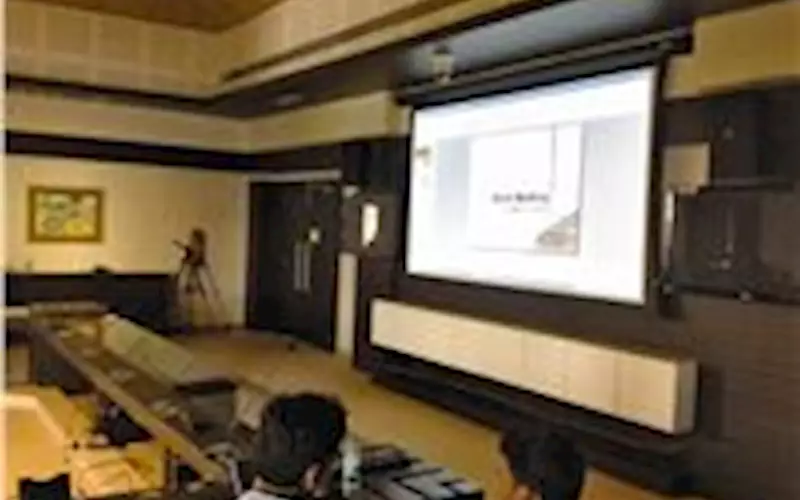How to make a perfectly bound book
Highlights of a book-binding workshop held during the second edition of the Publishing Next conference that was held in Goa at the Krishnadas Shama State Central Library, Panaji on 14 and 15 September
10 Oct 2012 | By PrintWeek India
Leonard Fernandes, co-founder of Cinnamon Teal and organiser of Publishing Next says, “This year, we set out to bring speakers and attendees that engaged in the practice of different aspects of publishing.”
A highlight was a book binding workshop at Publishing Next conducted by the duo from Welbound Worldwide, Suresh Nair and Dinesh Ingawale. They tackled questions from book publishers about the nitty-gritty of books.


Uneven absorption of moisture into paper causes these problems. Paper is a hygroscopic material, it continuously exchanges moisture with its environment to maintain a balance. Wavy edges are usually presented when a dry paper is exposed to a humid environment. In this case, the moisture flow is into the paper from its surrounding. Usually, in a book the inner area of the book remains unexposed, so the moisture intake happens only at the edges. Paper fibres expand due to moisture intake which leads to thin fibres inside and thicker at the edges. The physical transformation of this phenomena is wavy edges. On the other hand, warpage occurs due to uneven absorption on one side of the paper if the other side is dry. It is commonly seen in case of boards which receive moisture from the adhesives used during pasting. Normally these problems disappear on their own as the moisture balance is restored. Occassionally, when paper presents a problem during the processing stages (binding), it can be permanent. For this reason acclimatisation of stock is necessary before processing. Doing this will also prevent lot of process wastage.



|
Leonard Fernandes - Publishing Next
|
 The second edition of Publishing Next. Judging from the numbers that attended and the satisfied voices that emerged, dare we say that it was quite the success.
The objective of Publishing Next was to create a forum that would discuss topics related to the “future of publishing” – not just technologies that impacted publishing but also trends in consumer preferences and publisher practices, changes in the environment that necessitated certain paradigm shifts and disruptions whether in the form of new technologies or business processes.
That such a diverse group of people should be interested is perhaps because we chose topics that would appeal to different sections of the publishing sector. Among the panel discussions and workshops that generated the most passionate discussions were those on academic publishing, Indian language publishing, the preservation of oral traditions and book distribution issues. That said, the other panel discussions and workshops generated no less heat. Given the parallel track of events, one constant refrain was the inability of many to choose which session to attend. Even the insight talks, introduced for the first time, got a lot of attention and were very well received.
From the discussion, it seems like many issues affecting publishing are perennial in nature. Distribution remains one of them, so does the inability of the tech community to address the concerns of the publisher. The publishing community, in turn, are no longer awed or intimidated by the “spectre” of e-books, they realise that e-books are here to stay and will co-exist with printed books. But they, the publishers, have genuine concerns and get few answers.
We are happy with the way the conference turned out – that the discussions were intense and thought-provoking and that the conversations will perhaps continue long after the conference concluded. We do hope that those affected will continue to search for answers, many of which have been hard to find.
|
| Conference Voices |
|
Shobha Viswanath, Karadi Tales
I learned much and met several interesting people. It was well organised and very useful.
Vatsala Kaul Banerjee, Hachette India
That was the most engaging publishing conference I ever attended.
Venetia Kotamraju, Rasala Books
It was a great mixture of the practical and the intellectually stimulating, and I learnt a great deal as I’m sure did everyone. The conference has created a great space for some of the most interesting publishing projects in the country to get together and I think we appreciate it.
Sayoni Basu, Duckbill
I think the conference was great in the well thought out sessions, the interesting people and the right amount of laid-backness and informality. I heard some inspiring speakers and met some people I would like to get to know better. And feel suitably inspired about my own work.
Dinesh Ingawale, Welbound
We had a great interaction with publishers during our workshop at PublishingNext.
|














 See All
See All